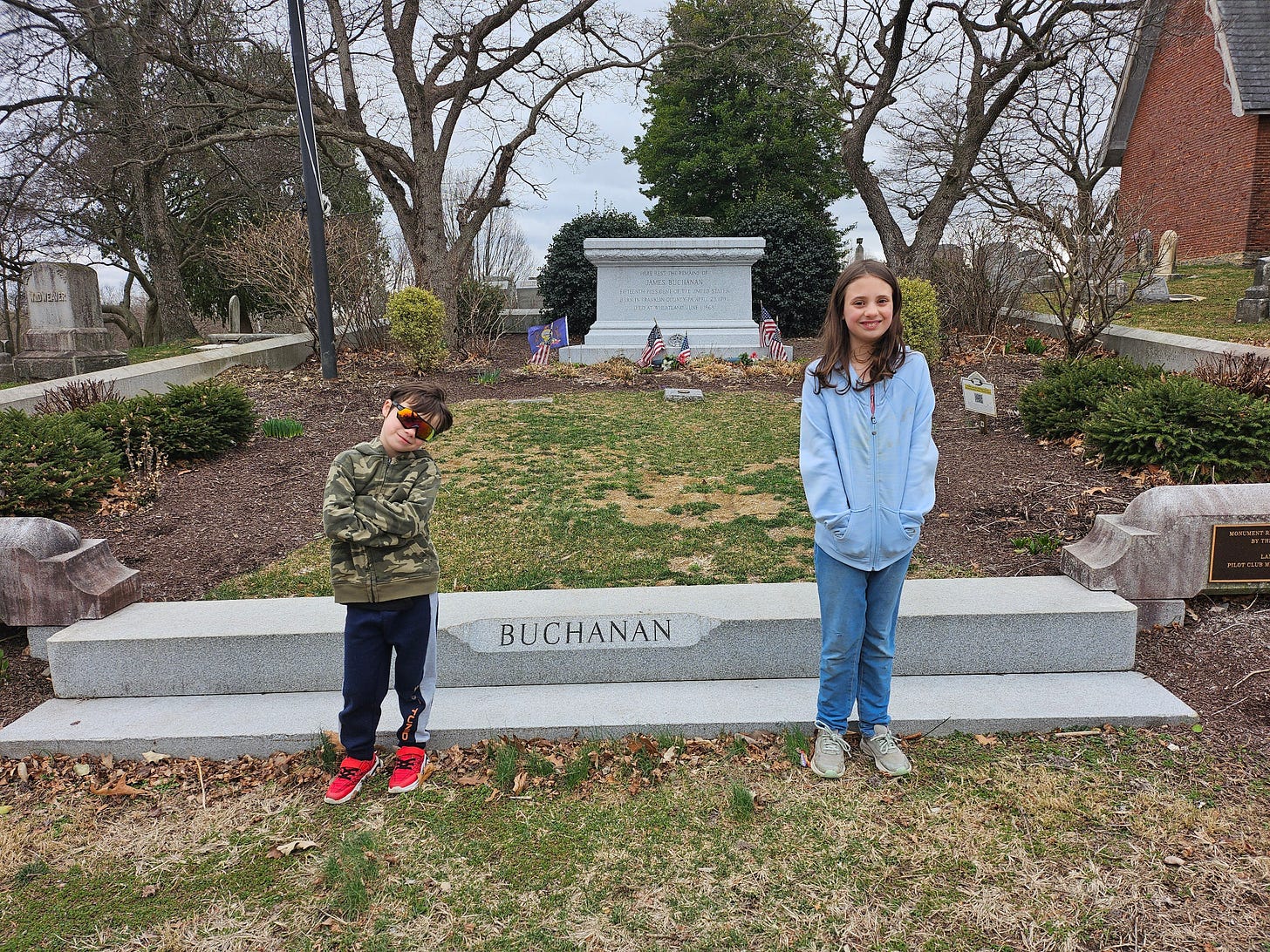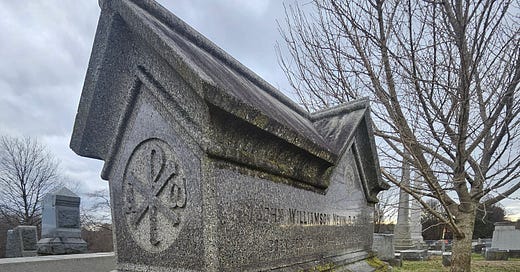A moment in history: the Mercersburg movement
In this semi-regular feature, enjoy a brief walk in the moments and movements of Christianity's past
If you’ve been following along here for awhile, you may recall that aside from being a fiction author, I also work for Christian History Institute— currently, as the managing editor of Christian History magazine. When I first started with CHI over a decade ago, I would not have branded myself as someone particularly interested in or knowledgeable of history. (I always loved a good historical story, but all those dates…how could I be expected to bother about those?) Nevertheless, after getting a chance to help with curriculum for an animated episode about the life of Augustine, something of an armchair historian awakened. One thing led to another, and now it’s my day job to learn about all kinds of fascinating things that have happened in the church’s past.
Maybe this is a hot take, but I think that a certain affection for and understanding of human history is a crucial part of writing good fantasy. Historical patterns correlate to fantasy tropes; a broad-base historical knowledge enriches the backstories of fantasy worlds; and nuanced understandings of past events inspires nuanced fantastical plots.
You never know when some of that will come out in a story you’re writing, but having that codex in the back of your brain is an easy source of inspiration!
At any rate, this walk through history is brought to you by our current issue of Christian History, on a lesser-known theological movement called the Mercersburg movement.
An unassuming grave
If you’re at all familiar with Lancaster, Pennsylvania, probably the first thing that comes to your mind is its well-known Amish community, and the bucolic imagery their lifestyle conjures: miles of rolling farmland, horse-drawn buggies on country lanes, cows and sheep and chickens free-ranging in grassy fields. And you’d be right—at least about surrounding Lancaster county.
Lancaster itself, however, is a real city, one as historic as neighboring Philadelphia, and with the same fingerprints of colonial and revolutionary America all over it. During a recent visit, I went in search of some of that American history in Woodward Hill Cemetery.
On a blustery spring day, dragging my elementary school-aged children along after a two-mile trek, we entered the grounds most famous for housing the grave of the country’s fifteenth president, James Buchanan.
We’d get to Buchanan, I told them. First, I was on the hunt for another grave, which was a bit less famous and a little more difficult to find. We kept our eyes peeled as we stalked the grounds. I only caught it thanks to a passing glimpse of the Chi-Rho symbol I knew should be there, but there it was: the final resting place of John Williamson Nevin.
Who?
Again, those familiar with Lancaster probably don’t think “John Williamson Nevin.” Before editing this issue, I knew nothing about him. But the life and work of John Nevin—a minister in the German Reformed Church, a scholar and theologian, and the architect of a nineteenth-century ideology known as the Mercersburg movement—has a greater bearing on American Christian history than you might realize.
In the upcoming issue of CH, you’ll meet Nevin and his fellow theologian, Philip Schaff, a scholar, historian, and minister in the German Reformed Church. Working first from a seminary located in Mercersburg, Pennsylvania and later from college and seminary campuses in Lancaster, the Mercersburg thinkers challenged the zeitgeist of American Christianity in the nineteenth century by swimming against the tide of revivalism and its iconic practices.
They also developed, wrote about, and shared a particular vision for the church they encountered in the United States. Before ecumenism even existed as a concept, Nevin and Schaff imagined an impossible future: one in which Catholicism and Protestantism could find common ground, recover the good, and slough off the aberrant in both traditions. Such a position invited heated controversy and charges of heresy.
They desired to see a gathered worship that recovered ancient practices and a Christianity that centered the presence of Christ, namely, in its understanding of the Incarnation and the Lord’s Supper. Again, controversy ensued, as some saw their views as far too Catholic. But along with their students, the two thinkers defended their hopeful vision of a recovered and united Christendom for the rest of their lives, facing off with various factions—Charles Hodge and the luminaries of Princeton Seminary, Charles Finney and his fellow revivalists, and finally, influential leaders of the German Reformed Church.
Mercersburg for the 21st century
What came of these strivings might not be readily apparent, especially as national turmoil in the Civil War eclipsed the movement’s influence. And yet as the twentieth century dawned, rife with greater evils outside the church than the conflicts within, the Mercersburg vision of Christian unity looked more appealing to believers both in the United States and around the world.
As I have had the opportunity to learn about the thinkers of this movement myself, I am surprised by the fingerprints I see in both my local Pennsylvanian history and in theological thought more broadly throughout American Christianity. Like the unassuming but beautiful gravestone I found in Woodward Hill Cemetery, the ideas of Mercersburg have been present but unnoticed.
Today, as Christians seek to find their roots in the ancient church and interpret what that means for a common future, many are discovering the writings of Schaff, Nevin, and other Mercersburg thinkers for the first time. A Mercersburg revival might just be at hand.

This article is adapted from the editor’s note in CH #155: The Mercersburg movement. If you enjoyed this short feature, you can read more at Christian History’s website for free with the button below!




